[Photographs by the author. You may use these images without prior permission for any scholarly or educational purpose as long as you (1) credit the photographer and (2) link your document to this URL in a web document or cite the Victorian Web in a print one.]
“Cochem Castle belongs to the category of castles protected by height that had to be protected all around. Romanesque fragments found in the well indicate a reinforcement of the castle around 1056. Around this time or a bit earlier the core of the Romanesque square keep (17ft by 17ft) was built, its walls being up to 12ft thick. At the same time, the keep was also made higher. In the first half of the 14th century, archbishop Balduin of Trier connected the castle and the town by massive walls. Furthermore a chain was installed below the castle to form a removable toll barrier across the river” (Reichsburg Cochem).
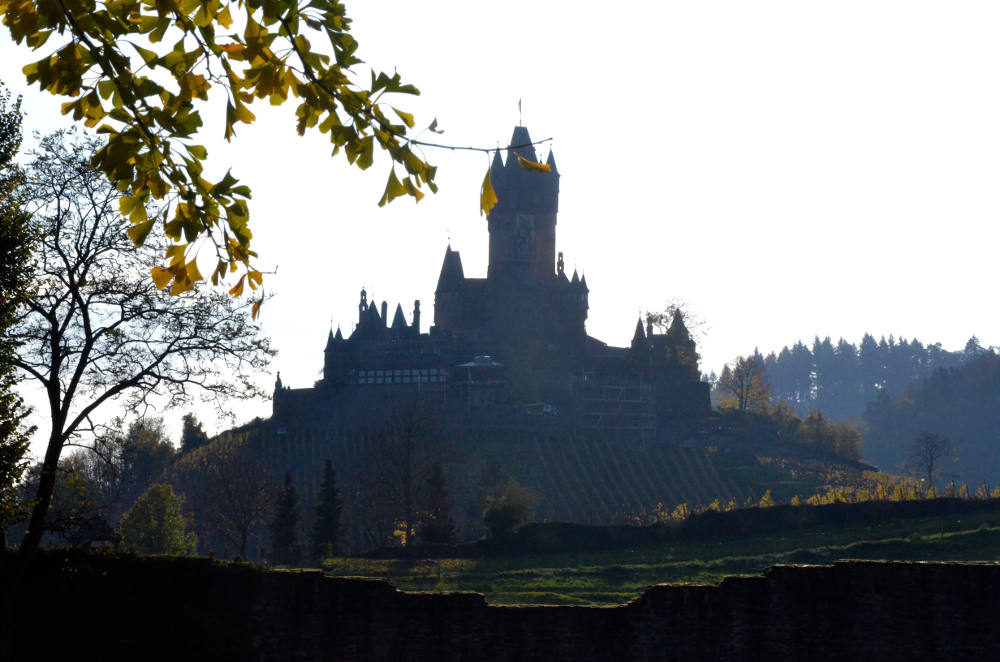
The castle, here seen silhouetted against the morning sky, dates back to the eleventh century, but is today almost entirely a late nineteenth-century creation of those who worked for a wealthy businessman, Louis Jacob Louis Fredéric Ravené. Louis XIV had the cstle burnt to the ground in 1678, and it long consisted of little more than a few walls until Ravené, the descendent of Huguenots who moved to Berlin from Metz, France, as religious refugees in 1685, turned it into a neo-gothic fantasy and used it as a summer home. According to a Cochem city website, the castle proved unlucky for its owner, since it was there that Ravené’s wife, Therese, fell in love with a guest and left her husband.
With the support of Hermann Ende, a government official, Ravené applied to the Prussian government in 1867 for permission to purchase and restore the castle, and he received permission on several conditions, the first of which was that the reconstruction preserve the castle ruins, In addition, the government required that minister for science and culture approve the plans and that the castle should be open to the public. Under the direction of Ende, much of the debris was cleared, starting in June 1868. Construction began in 1871 under the direction of Julius Carl Raschdorff, an official who also worked on the Wallraf Richartz museum in Cologne.


As these photos show, Ravené’s castle has conical-topped turrets, fancy dormers, and structures that jut out from walls everywhere, but it also has a large number of square windows out of place in a castle actually mean to be a fortification.
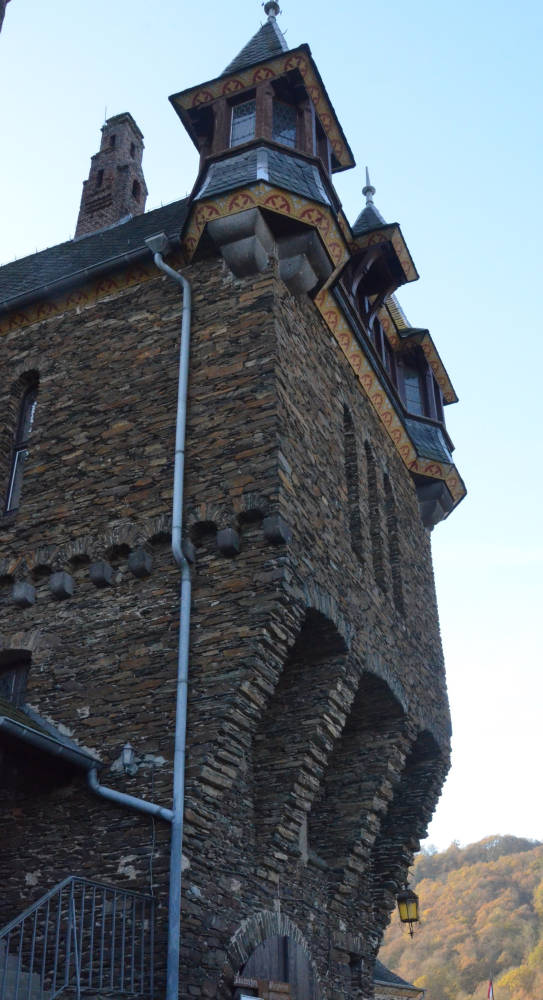
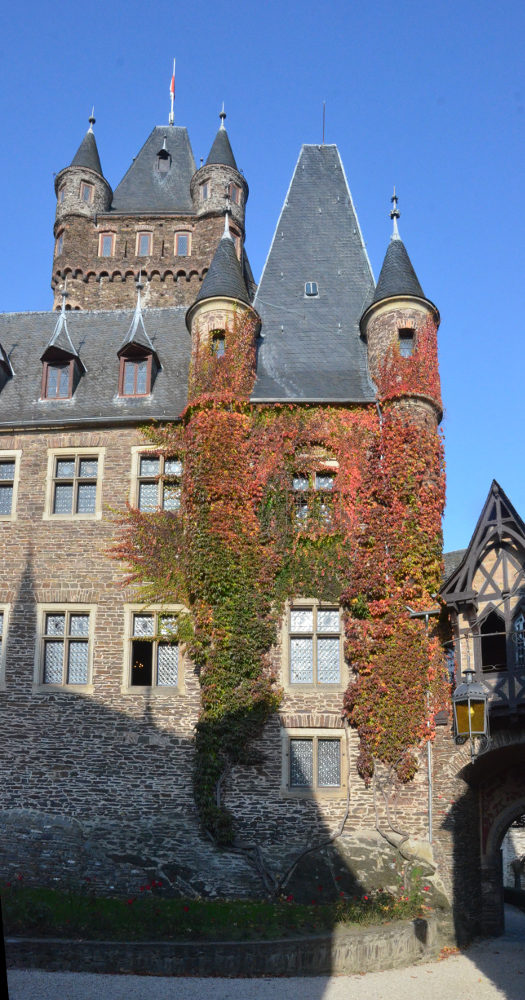
More turrets and towers.


Left: The wide open area that one reaches after a walk up the lower parts of the castle. Right: The area to the right of that in the last photo.
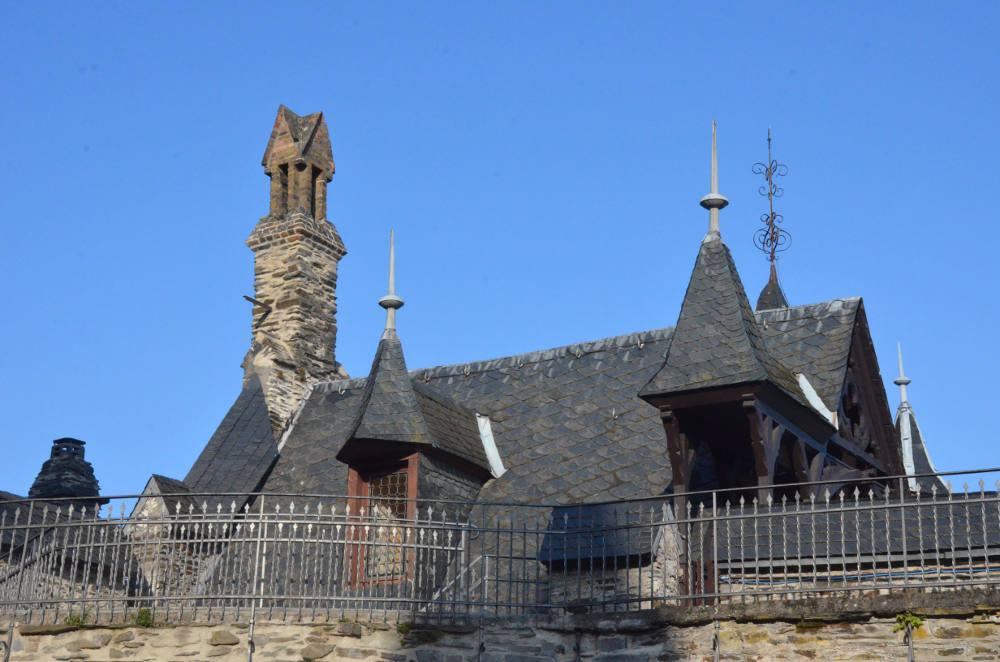
One of the roofs topped with pointied things, including a chimney one never saw in the middle ages.

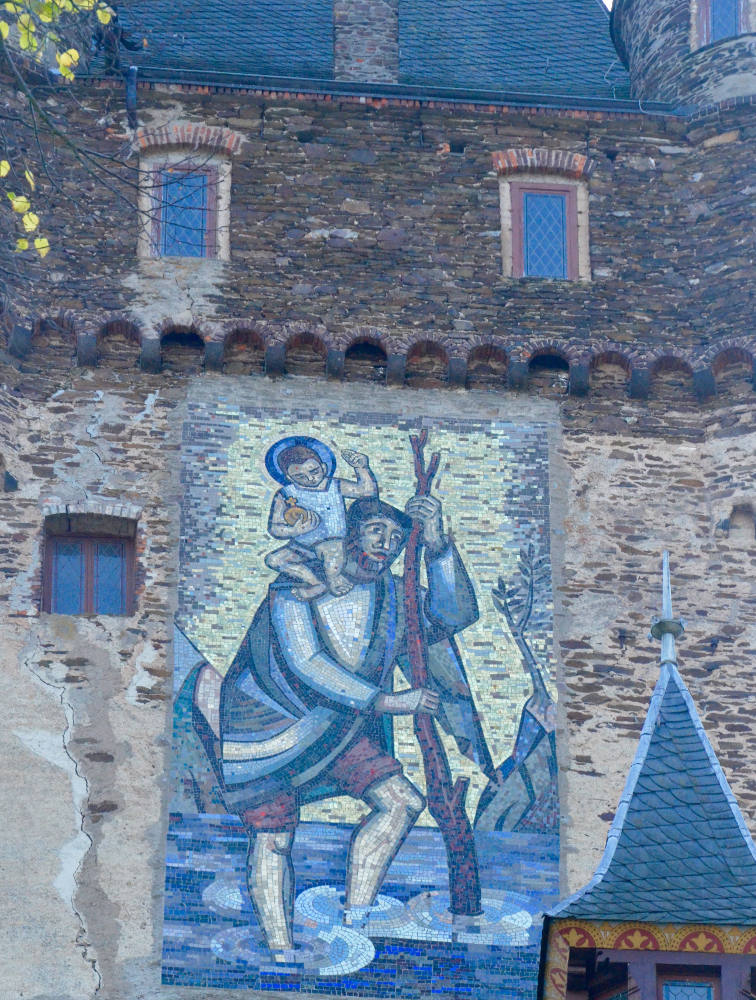
Left: Painted wooden columns. Right: A painting of St. Christopher on the side of the lower building.
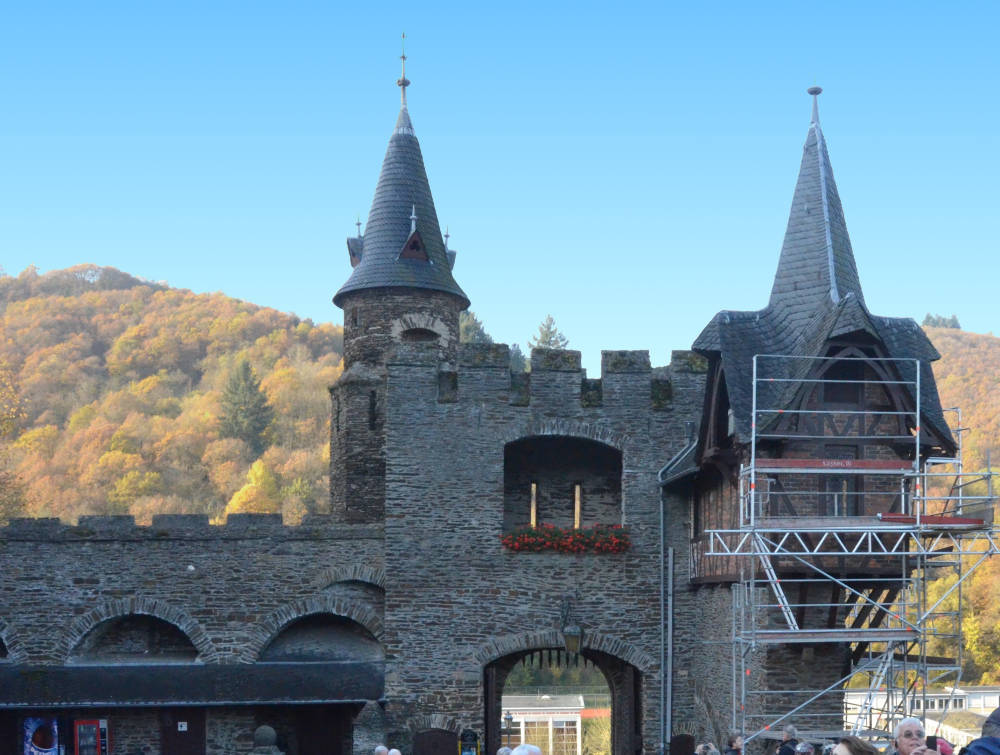
The castle entrance seen from within.
Interior
“The interior design was assigned to Prof. Ernst Ewald from Berlin. He designed the intricate painted decoration on the ceilings and the walls on the inside and the outside. The poker [sic] work he carried out either himself or had his employees Göthe and the painter Münster from Cologne do it for him. But local artists and craftsmen also played a part.” (Reichsburg Cochem ).
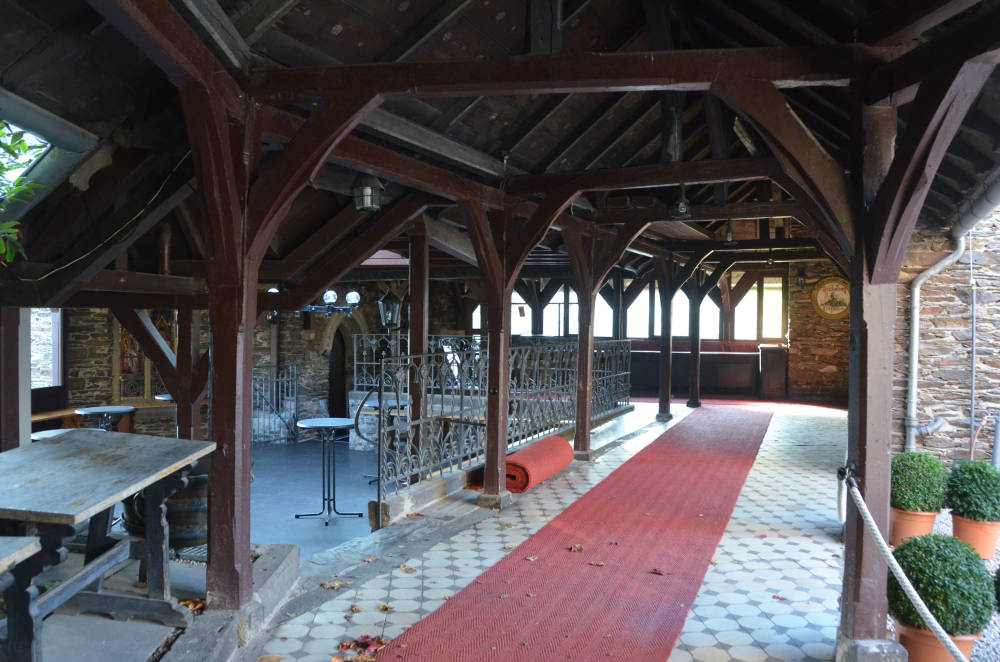

Left: Area at the top of the castle. The photograph of the city and river (the last photograph below) were taken from a turret at the right. Right: Some of the many beautiful nineteenth-century stained glass windows designed by Ernst Ewald.

Unlike most of the castle’s windows, these three depict religious scenes from the New Testament.


A section of painted ceiling and two more windows, both with very complex heraldic devices.
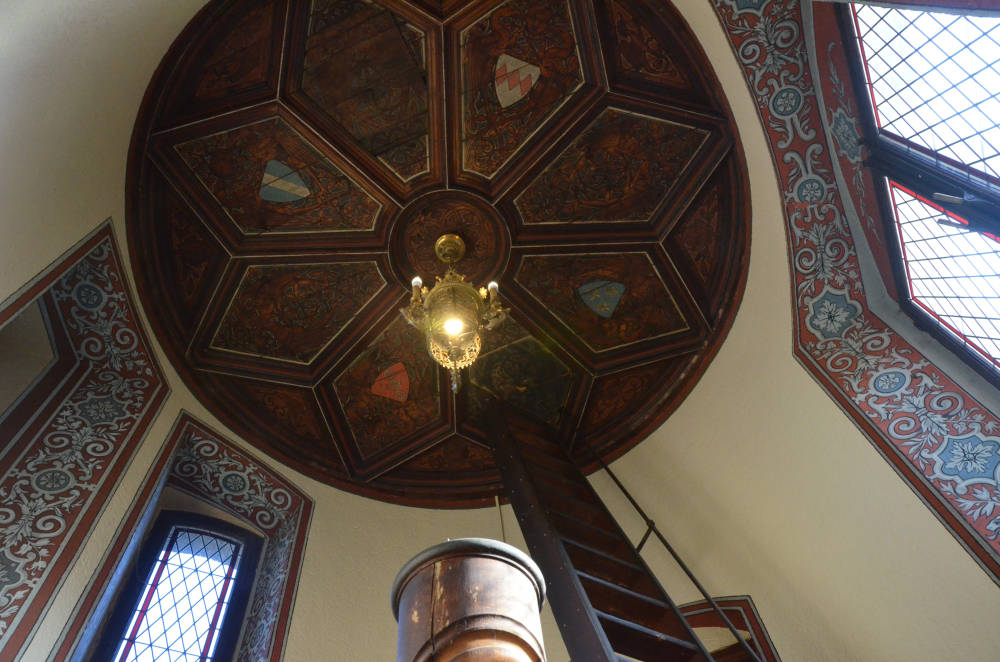
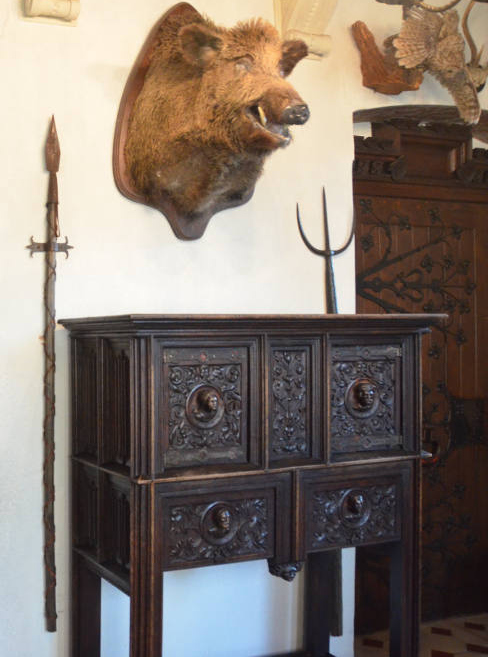
Left: Painted ceiling and decorations at the top and side of window openings. Right: A 400-lb. wild boar and boar-hunting spears.

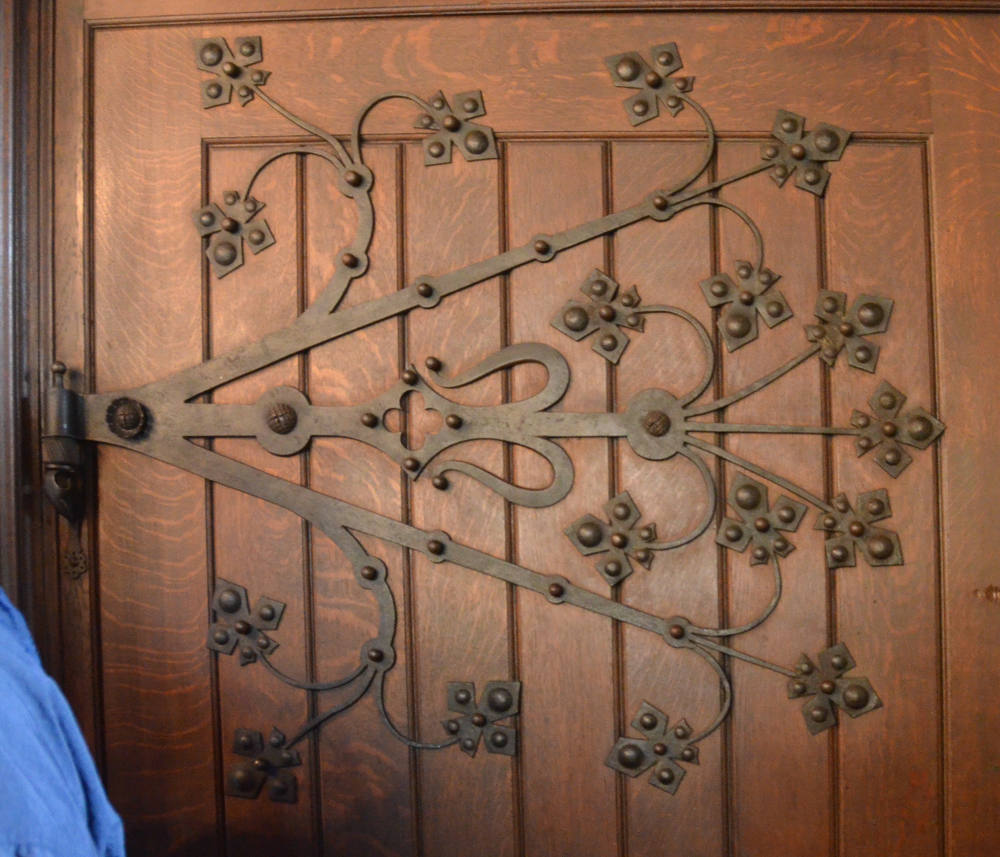
Left: This carved wooden panel is representative of the carving found throughout the building — a little heavy and very ornate. In this case we see a nude looking at a mirror, an old emblem of vanity. This panel is adjacent to another one depicting a nude holding a globe. Right: A most ornate, extravagant hinge.

The view of the village of Cochem and the Moselle River from one of the castle towers.
Related material
- Another view of Cochem and the Moselle
- Information plaque about the building's history
- View of upper courtyard (I)
- View of upper courtyard (II)
Bibliography
Reichsburg Cochem (www.burg.cochem.de). Web. 13 November 2017.
Last modified 13 November 2017